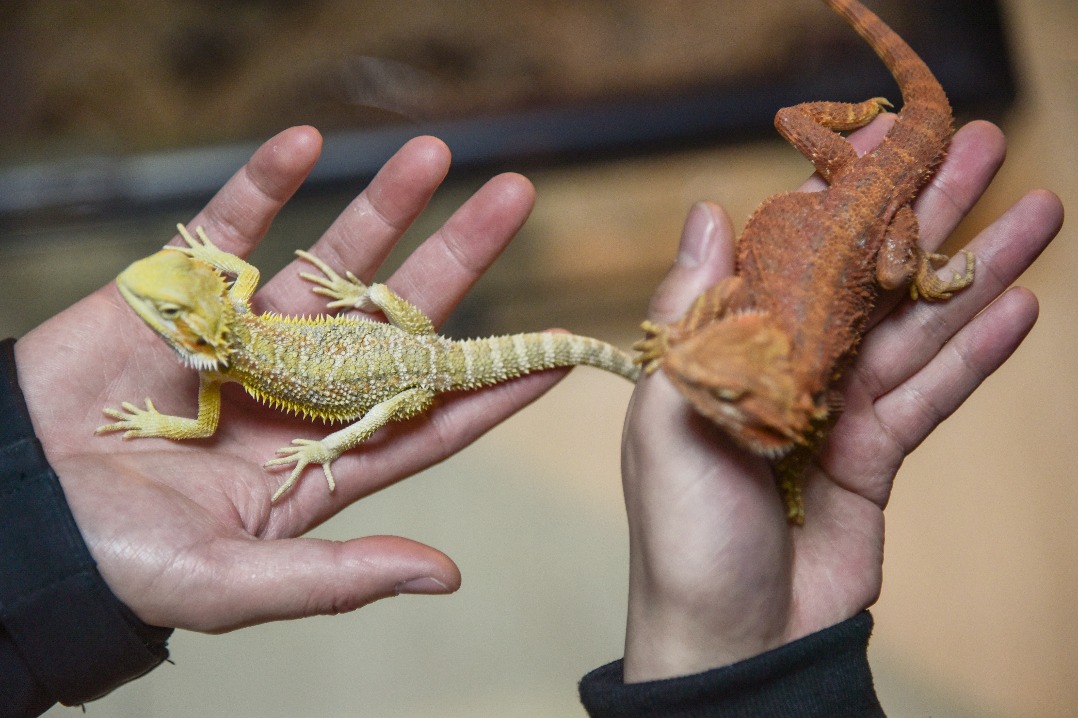WAHOO — During the pandemic, animal shelters across the country watched as lonely quarantiners turned to pet adoption to bring a spark to their lives. As a result, shelters’ kennels emptied.
But before long, those once-excited new pet owners returned with their animals as the average cost of living soared. In 2023 alone, the nationwide population of animals living in shelters saw a net increase of 250,000, as reported in an Associated Press article published in December.
Both the Capital Humane Society in Lincoln and Nebraska Humane Society in Omaha faced overcrowding at their shelters last year, with few signs of relief.
At the same time, many American animal shelters, including the Nebraska Humane Society, experienced staffing shortages, which in Omaha led to NHS cutting programs like its low-cost spay and neuter clinic.
People are also reading…
During NHS adoption sales last year, which were intended to free up space at the shelter, people showed up in droves and waited in line for hours as NHS staff struggled to meet the demand.
A half hour from both of the state’s largest animal shelters, Saunders County Lost Pets in Wahoo has successfully weathered the prevailing overcrowding and staffing issues, and their furry friends are no burden.
Founder Debora Wehling-Wilcox agreed that in 2023, her shelter received more pet surrender requests than in years past.
“I think too many people probably adopted a dog when they were staying home during COVID,” she said.
But at Saunders County Lost Pets, stray animals get priority. It’s in the name, and it’s how SCLP started.
“We try to help as many as we can, but I can’t fill the building up full of surrendered pets and then not have room for a stray,” Wehling-Wilcox said.
In 2005, Wehling-Wilcox was re-sodding the yard at her Wahoo house, and she’d taken down part of the fence to do so. She left her 8-year-old chocolate lab and young yellow lab unsupervised for a moment as she went to grab the garden hose, and when she came back, her two dogs had sprinted up the street and around the corner.
“I never, ever saw them again. Nobody called and said they saw them. It was like they just disappeared from the planet,” Wehling-Wilcox said.
She spent the following days and months driving up and down every county road looking for her lost dogs. Wehling-Wilcox didn’t find hers, but she found plenty of others.
“That’s what made me start realizing, like, all these dogs are out here that no one’s claiming. What’s happening?” she said.
When Wehling-Wilcox lost her dogs — her “babies,” she said — the heartbreak changed her life.
“That loss created this compelling force to make a change,” she said. “And it’s still here today.”
For several years, Wehling-Wilcox housed dogs in a row of kennels in her garage, sometimes taking in animals that had been dropped off at area veterinary clinics. She’d get the phone call that a stray needed a temporary home, and each time, she wondered how she could possibly take care of another.
“And I’d go get that dang dog anyway,” she said.
But then, miraculously and without fail, someone would call her and take in one of Wehling-Wilcox’s dogs as a pet.
“That always made that force even more powerful, like we’re doing the right thing and we’re doing what we’re meant to be doing,” Wehling-Wilcox said. “And we’re going to keep doing it.”
In 2009, SCLP moved into the building they occupy today on Fifth Street in Wahoo. They offer boarding, rescue services and house dozens of cats that are up for adoption, as well as a handful of dogs.
While 2023 was tough on many shelters, it was a banner year for SCLP, especially for its TNR — or Trap, Neuter, Release — program, which aims to curb the number of unfixed feral cats roaming the county. Wehling-Wilcox said SCLP sunk $17,000 into the TNR program in 2023, which comes out to hundreds of neuters and spay procedures given to Saunders County cats.
Still, Wehling-Wilcox said they need to limit the number of cats they pay to fix each year. The shelter survives off of donations and is buoyed by the profits from animal boarding.
“You can’t just do every animal,” she said. “We can run ourselves right out of business, or we can be smart about it.”
Wehling-Wilcox said the ideal number of dogs they can house is between seven and 10, but they had 20 late last year after a pregnant blue heeler delivered 10 puppies. Usually, puppies are adopted quickly, Wehling-Wilcox said, but it took about 15 weeks for them all to find homes — perhaps a symptom of the slowed pet adoption economy.
But normally, Wehling-Wilcox keeps a lid on the number of dogs SCLP can take in.
“We have to be able to take care of them,” she said. “We don’t have the people or the volunteers to handle overcrowding. It’s hard on your heart, but it’s the way it is.”
The 10 or so volunteers SCLP does have are dedicated animal lovers, Wehling-Wilcox said. A handful of Wahoo school students come by in the afternoon and tend to the animals boarding at SCLP.
And Wehling-Wilcox’s longtime partner at the shelter, Veronica Jarrett, has helped her since the days of keeping dogs in her garage.
“I don’t even consider myself a volunteer,” Jarrett said. “This place is my life. It’s as simple as that.”
In 2024, Wehling-Wilcox doesn’t expect much to change. As long as they’re in business, they’ll continue to put the animals first, and that “compelling force” will still drive SCLP’s work.
“That same energy that started this whole thing is still here today.”








